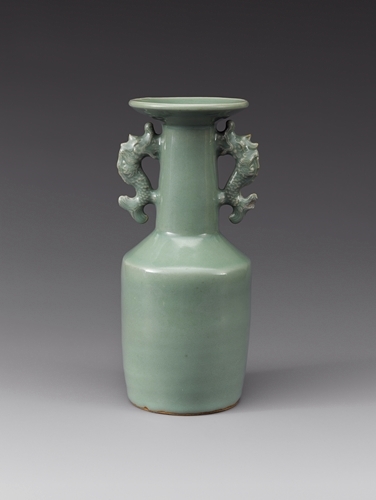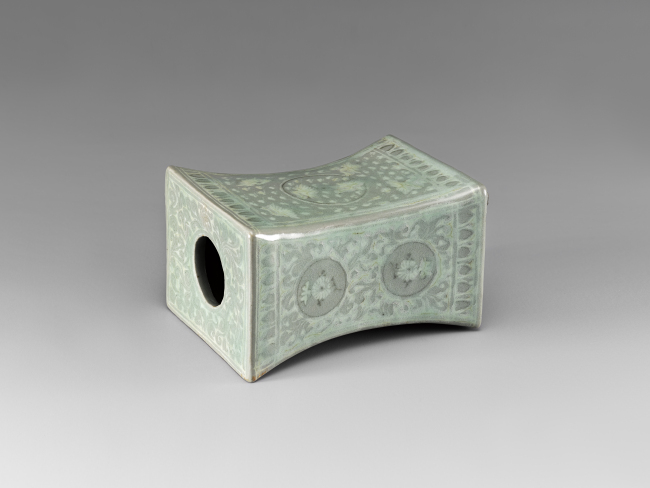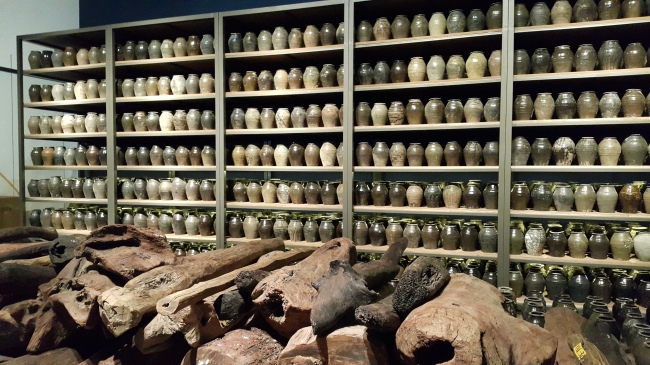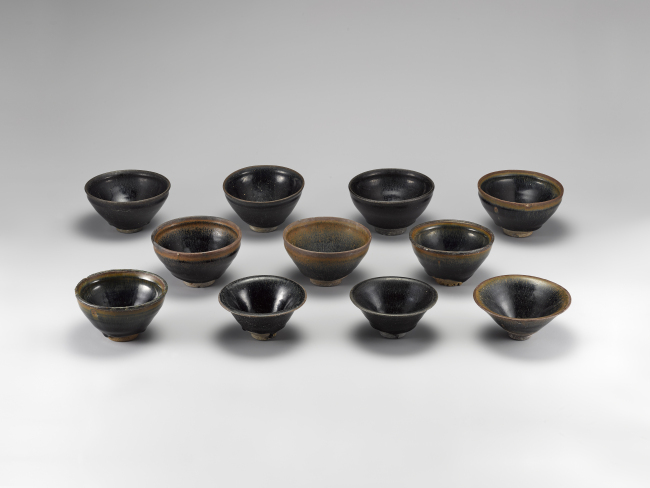Treasures from Sinan shipwreck on view
National Museum of Korea unveils artifacts discovered in old Chinese trade ship that sank near Korean Peninsula in 14th century
By Lee Woo-youngPublished : July 26, 2016 - 14:15
In August 1975, a fisherman landed an unusual catch off the west coast of Korea.
In his fishing net were six ceramic vessels including celadons -- or pottery made with celadon glaze -- that date back to the 14th century Yuan Dynasty China. This prompted people to say that there must be a shipwreck with more prized relics buried deep in the muddy seabed off the island of Jeungdo, Sinan in South Jeolla Province.
A year later, archaeologists launched an underwater salvage operation which continued until 1984. Korea’s largest underwater excavation discovered some 24,000 pieces of artifacts that offer a look at the cultural exchange and maritime trade in East Asia.
In his fishing net were six ceramic vessels including celadons -- or pottery made with celadon glaze -- that date back to the 14th century Yuan Dynasty China. This prompted people to say that there must be a shipwreck with more prized relics buried deep in the muddy seabed off the island of Jeungdo, Sinan in South Jeolla Province.
A year later, archaeologists launched an underwater salvage operation which continued until 1984. Korea’s largest underwater excavation discovered some 24,000 pieces of artifacts that offer a look at the cultural exchange and maritime trade in East Asia.

The items recovered from the shipwreck are on display to the public for the first time at the National Museum of Korea until Sept 4.
“It must have been a big accident at the time. It was a Chinese ship bound for Japan which encountered a huge storm on its way to the port of Hakata. Some 40 to 50 sailors were on board and we don’t know whether they survived the storm or not,” said Yi Young-hoon, the director general of the National Museum of Korea at a press preview on Monday.

“It must have been a tragic accident, but ironically it is a treasure ship to us offering a window to the life and cultural exchanges of the time.”
The ship’s cargo consisted of Chinese ceramics, coins, red sandalwood blocks, metal ware and spices, ordered by upper-class Japanese customers from China. Also included in the cargo were seven Goryeo celadon pieces, which were highly prized by the Chinese. Some 360 wooden shipping tags were found among other relics from the shipwreck, which identify the Japanese customers who ordered the goods.
The first section of the exhibition explores the preference for Chinese goods among the upper-class Japanese of Kamakura shogunate (1192-1333). High-ranking officials, upper-class samurai and temples ordered Chinese ceramics and other luxury items to decorate their places and homes. About 60 percent of the recovered items are porcelains designed for the pastimes enjoyed by the Japanese.
“Ceramics were used for many purposes, but Japanese liked to drink tea, burn incense and arrange flowers with them,” said Kim Young-mi, the curator of the exhibition.
A few Japanese paintings on display offer visual evidence of Japan’s preference for Chinese luxury items. The ceramics on display at the exhibition are also found in the paintings that portray lavish feasts held at a temple, using Chinese table and tea wares.

During the Kamakura period, Japanese temples and palaces imported a lot of Chinese goods for the construction or extension of buildings. Record shows that it took some 40 days for Chinese merchants to prepare and package ordered items before they were sent from the port of Ningbo, south of Shanghai on Hangzhou Bay, to Hakata, in the summer of 1323.
The ship, estimated to weigh more than 200 tons, was one of the largest cargo ships in the 14th century in East Asia. At 34 meters long, 11 meters wide and 3.7 meters deep, it was designed to transport large quantities of cargo and accommodate hundreds of sailors and passengers. More details on the ship can be found in the second section of the exhibition.
Scholars were able to speculate about life onboard the cargo ship by examining objects found in the shipwreck. Chinese sailors cooked noodles, stir-fried vegetables and meat, and added spices such as pepper, ginger and cloves to their food. Kitchen knives, cutting boards and pots were also found. Passengers played chess and games using wooden boards and roughly cut wooden pieces to pass time during the long voyage: It would have taken 1/2 months to 2 months to sail from Ningbo to Hakata.

The last part of the exhibition features rows of shelves filled with hundreds of ceramics that were never delivered.
“Discoveries from the Sinan Shipwreck” runs until Sept. 4 at the special exhibition gallery of the NMK. Tickets range from 2,500 won for children to 5,000 won for adults. For more information, visit www.museum.go.kr.
By Lee Woo-young (wylee@heraldcorp.com)








![[KH Explains] How should Korea adjust its trade defenses against Chinese EVs?](http://res.heraldm.com/phpwas/restmb_idxmake.php?idx=644&simg=/content/image/2024/04/15/20240415050562_0.jpg&u=20240415144419)










![[Today’s K-pop] Stray Kids to return soon: report](http://res.heraldm.com/phpwas/restmb_idxmake.php?idx=642&simg=/content/image/2024/04/16/20240416050713_0.jpg&u=)